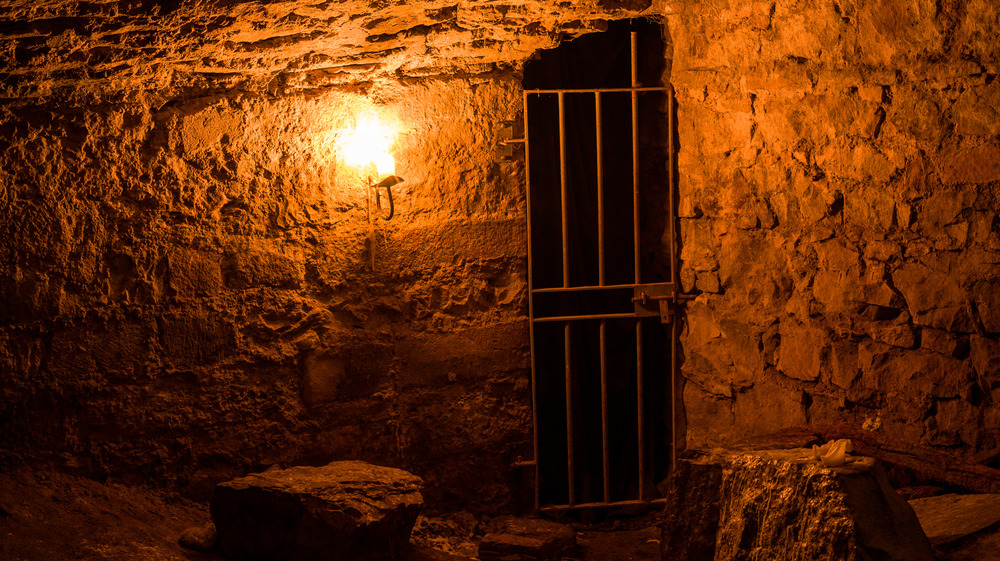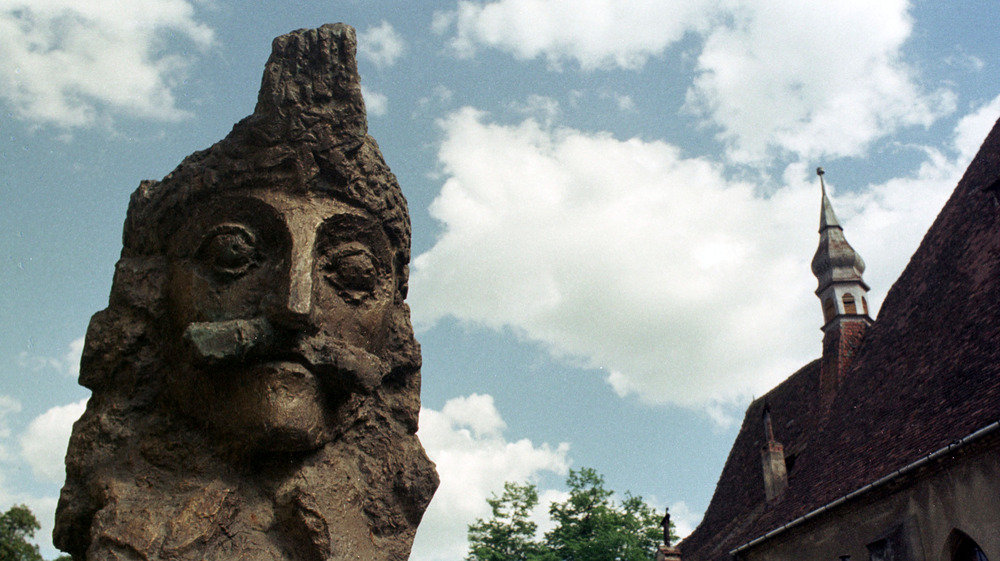The True Story Of Vlad The Impaler's Hungarian Labyrinth-Prison
Have you ever wanted to wander through a deep, underground, cavernous labyrinth of low, rough ceilings dripping water into frigid pools sunk into uneven stone floors in pitch black rooms? For that matter, have you ever wondered at the necessity of health and safety waivers, or even considered traveler's medical insurance? No worries. The Buda Castle Labyrinth in Budapest, Hungary — the "Panoptikum," as it's called on Atlas Obscura and Lonely Planet – is here to take care of both needs. And also, it used to be Vlad the Impaler's prison. Like, one of history's most egregious sadists and despotic tormentors of the innocent? Doesn't ring a bell? How about this: He was born in Transylvania and was dubbed Dracula. (The vampire part came later.)
So the prison. Nestled on Castle Hill near Buda Castle on the west side of the Danube River — the "Buda" side, with the other side being the former city "Pest" — the Panoptikum is a one-mile-long series of winding corridors and prison chambers, part of a larger, six-mile-long labyrinth that comprises one of the oldest parts of Budapest. It contains evidence of prehistorical societies dwelling within its caves, and has been used not just as prison, but a harem under the Ottomans, and a bunker and hospital during World War II, as Travel Explorations explains.
And in the 15th century it served as a decade-long home to Vlad Tepes, aka "Dracula," or "son of Dracul," the warlord of Wallachia bequeathed the historical nickname "the Impaler."
Vlad's underground cavern of darkness and torment
You could easily walk by the street-level entrance to the Panoptikum and not notice. The signs are small, the entryway nondescript, and the ticket area resembles nothing of the otherworldly menace that permeates the chambers below — chambers so dark that even eyes wide open can detect no light.
It's a fitting setting for Vlad the Impaler, a bloodthirsty prince born in 1431 in Transylvania (modern-day Romania) who escaped from his Ottoman captives, overthrew his cousin in a coup, claimed the throne of Wallachia, and basically began impaling anyone and everyone on poles as a form of torture, as NBC News recounts. A gargoyle marks the location of his former cell in the Panoptikum, scaring away anyone foolish enough to linger in the spot where he once dwelled, seethed, and raged. Between it and the entrance, and along corridors, stand waxen figures arranged in still-life scenes of those who once occupied the labyrinth underneath Buda Castle.
It's not certain exactly how long Vlad spent in the Panoptikum, but a decade is the most commonly-agreed upon length. At one point during Vlad's reign, he went to the Hungarian king Matthias Corvinus for aid, who promptly declared him a traitor and tossed him in prison, as HeadStuff explains. Some legends claim he died there, others that his body was buried there, and his head elsewhere. Others yet claim that his spirit is the "Black Count" ghost haunting the Panoptikum since the 19th century.

